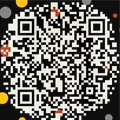沙漠之亭-瓦地伦山谷 / MEAN*
[ad_1]
MEAN*:約旦南部的瓦地倫山谷沙漠以其超凡脫俗的美景吸引著來自世界各地的遊客。我們在該沙漠中設計了一個3D打印涼亭,作為休息和公共聚會的綠洲空間,歡迎遊客的到訪。
MEAN* designed a 3D printed pavilion for welcoming visitors into the desert of Wadi Rum, south of Jordan. The space serves as an oasis of rest and communal gathering. Drawn to its otherworldly beauty, The desert of Wadi Rum in the south of Jordan attracts visitors from all over the globe.

瓦地倫山谷的地形與火星表面十分相似。這片寧靜的沙漠曾是許多以太空為敘述背景的電影創作地,比如《火星救援》、《星球大戰:俠盜一號》和《火星末日》。通過參考“火星營地”附近地塊上的輕量級測地穹頂系統,設計團隊設想出一個可部署到數控彎曲鋼管系統上的新型3D打印面板系統。
The topography of Wadi Rum closely resembles that of Mars. This serene desert landscape had been a stage for many space-age movies such as ‘The Martian (2015)’, ‘Rogue One: A Star Wars Story (2016)’ and ‘The Last Days on Mars’.
Taking reference from the lightweight geodesic dome system of ‘Mars Camp’ which is located on a plot near the site, the design team envisioned a novel system of 3D printed panels that can be deployed onto a CNC bent, steel pipe system.

融合當地傳統與航天技術的獨特設計
Designed with a unique overlap of Bedouin Heritage and Space-Age Technology
我們的團隊使用生成式設計方法來模擬一個整體結構:一個由3D打印聚合物外殼與3D打印混凝土表面混合的物體。受當地貝都因人獨特的移動建築的啟發,我們傾向於使用“Mesh Relaxation”參數化策略來模擬帳篷形式,在平衡狀態下生成數字懸鏈線網格。
Our team utilized generative design methods to simulate a holistic structure: a hybrid of a 3D printed polymer shell on 3D printed concrete topography. Inspired by the ingenuity of the mobile architecture of the local Bedouins, we were inclined to simulate a tent-form using the ‘Mesh Relaxation’ parametric strategy, which generates a digital Catenary mesh geometry, in equilibrium.

由磁力場衍生出的涼亭
The pavilion is generated from a field of forces
通過將涼亭的形式固定在一個“力的圖表”上,釋放出不同的“電荷”,這些電荷與座位區相對應,我們觀察了磁場現象來統一這些電荷,利用從各空間之間的相互作用所產生的圖案來製定涼亭的平面圖。
多個節點之間的磁力模式現象衍生出了一種有趣的設計。為了將這一現象量化成一個可模擬模式的數字算法,該團隊採用了由德國數學家C. Runge和M.W. Kutta研發的方法編寫了一個“RK4方法”的腳本。大約在1900年左右,磁場模擬產生的“流線”被投影到經過數字模擬的優化網格上,該網格是通過近似百年曲線的腳本而生成的。
該腳本產生類似磁力的矢量場,然後處理這些矢量場將結構的外殼細分為在6軸工業機器人打印範圍內的面板。 3D打印混凝土平台的階梯地形創造了從沙地到室內的過渡空間。網格錨定在階梯平台的外圍,從而為入口創建了迎賓拱門。
By grounding the tent form as a ‘diagram of forces’ emitting various ‘charges’ that correspond to seating areas, we looked at the phenomena of magnetic fields to unify those charges. We used the patterns emerging from the interaction of one space to another, to develop the floor plan of the pavilion.
The physical phenomena of the magnetic force patterns between a number of nodes represents an opportunity for an interesting planning strategy. To quantify this phenomenon into a digital algorithm simulating those patterns, the team wrote a script that adopts the ‘RK4 Method’, developed by the German mathematicians C. Runge and MW Dutta. Around 1900. The ‘flow-lines’ from the magnetic field simulation are projected onto a digitally simulated optimized mesh which is generated via a script that approximates centenary curves.
The script generates vector fields resembling magnetic forces which are then manipulated to subdivide the outer shell of the structure into panels that are within the printing range of a 6-axis industrial robot. A stepping topography of 3D printed concrete platform creates a transition from the sandy site to the interior. The mesh is anchored towards the periphery of the stepped platform, creating welcoming archways for entries.

沙漠中的綠洲和微生態空間
An Oasis of shade and a micro-ecology within the desert
場地中所有的管線接觸點都由支撐管地面的中心延伸出來,進而形成纜索接觸點,圍繞著這些點形成能容納人的空間。在形似漏斗的結構中心,種植了沙漠樹木和灌木以調節室內氣候。這些“漏斗”也起到“採光井”的作用,捕捉自然光,並將自然光引入空間。
通過細分組成外殼的面板,實現了3D打印的最大效率,而這些鑲嵌的面板將光線引入空間內部,且保持了內部良好的通風。當夜幕降臨,沿著力場模式排列的線性照明裝置會在此時產生柔和的光點亮室內空間。
The points of which all the field lines emerge from the center where the supporting pipes are grounded, forming funicular touch-points, around which seating areas are allocated. At the center, desert trees and shrubs are planted to regulate the atmosphere of the interior. These funnels also act as ‘light-wells’ capturing natural daylight and channeling it into the space.
The panels making up the outer shell are tessellated for maximum efficiency for 3D printing. These tessellated panels filter light into the space while ensuring a well ventilated interior. At night, linear lighting fixtures that are aligned along the force field patterns, create a gentle ambient lighting within the interior.

跨時間的交匯點
A cross-temporal meeting point
該沙漠之亭是將場地的構思與現代建築技術相結合的產物。其設計初衷在於為人們打造一個在沙漠中白天高溫時庇蔭的綠洲,夜晚時的慶典空間、講故事和休憩的地方。如今,它為人們提供了一個舒適宜人的庇護所,將來,也會為人們向火星乾旱地區移居提供了案例研究。
The Desert Pavilion is the outcome of combining ideas from the site with current building technologies. The structure is designed to form a space of shade from the heat of the desert during the day, and a place of celebration, storytelling and rest, at night. It serves as a welcoming hospitable shelter for today and a case study for inhabiting the arid landscapes of Mars in the future.
▼平面圖 Plan


▼立面圖 Elevation




▼剖面圖 Section


項目類型:3D打印結構
面積:300平方米
地點:約旦 魯姆
狀態:設計階段
首席建築師:Riyad Joucka
團隊:Wael Nasrallah
日期:2020年
Type: 3D Printed Structure
Size: 300 Sqm
Location: Wadi Rum, Jordan
Status: Proposal
Lead Architect: Riyad Joucka
Team: Wael Nasrallah
Date: 2020
更多 Read more about: MEAN*
[ad_2]










